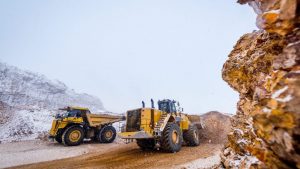An interesting construction project is under way on a 22-acre site at Guelph, where a pyrolysis plant is taking shape to turn waste wood from construction and demolition sites into bio-oil, an alternative fuel that can be derived from just about anything containing a high level of cellulose.
INTERNET RESOURCES
An interesting construction project is under way on a 22-acre site at Guelph, where a pyrolysis plant is taking shape to turn waste wood from construction and demolition sites into bio-oil, an alternative fuel that can be derived from just about anything containing a high level of cellulose.
The plant is to be completed next month and commercial production should begin this spring. At full capacity, the plan will process 66,000 tonnes of biomass a year, producing bio-oil with an energy output equal to 130,000 barrels of oil.
Dynamotive Energy Systems, of Vancouver, developed the technology the plant will use. It’s a process called “fast pyrolysis,” in which cellulose (the largest constituent in wood) is exposed to extremely high temperatures in an oxygen-free environment for a brief time — as little as two seconds.
The result is bio-oil, char and some gases.
Bio-oil is a dark brown, free-flowing liquid that can be used to fuel boilers, turbines, kilns and stationary diesel engines. The char can be burned in coal-fired boilers, or as part of the fuel in lumber kilns fuelled by wood residues.
The gas can be recycled back into the process, producing as much as 75 per cent of the energy.
All this is important, coming as it does at a time when the environment — and climate change, specifically — seems finally to have emerged into the general public’s consciousness. If it stays there, we’ll be seeing more and more about carbon emissions and ways to reduce them.
And bio-gas might be one way to help. It’s a clean fuel, Dynamotive says, because it is not a hydrocarbon — at least in the company’s version of bio-gas. That’s because, from a chemist’s point of view, the composition of bio-oil doesn’t vary significantly from the chemical composition of the feedstock used.
Since wood is about half oxygen, then wood-based bio-oil is also about half oxygen. When burned it emits no sulphur dioxide and only about half the nitrogen oxide emitted when burning fossil fuels.
There are many firms working on the pyrolysis process, tweaking it to accommodate different uses. A Canadian outfit called Agri-Therm is developing the process to make bio-oil from agriculture waste such as straw, corn stalks and the like, in co-operation with the University of Western Ontario in London.
In Ottawa, another Canadian firm, called Plasco Energy, is building a pilot plant at a landfill site that will use pyrolysis to process just about everything in the landfill to derive a gas to power a generator — thus converting municipal garbage into electricity.
Dynamotive already has a plant in action at West Lorne, southwest of London. That plant uses sawdust and scrap wood from a wood flooring plant. Part of the energy it produces goes back to the flooring plant to run its operation.
The company has also successfully performed an industrial-scale test turn of bio-oil as a replacement for natural gas in the lime kiln of a pulp-and-paper mill in British Columbia.
In that test, more than 20 tonnes of bio-oil were used in equipment that had not had any mechanical modifications.
It was an important test for two reasons: Changing fuel can often mean mechanical modifications must be made. Being able to use existing equipment without modification would remove a major obstacle to acceptance of the technology. And, lime kilns in Canada consume the equivalent of 2.45 million barrels of oil annually.
When you think of the vast amounts of energy used in the manufacture of cement, gypsum board and steel, it’s easy to realize the construction industry has a direct interest in the development of fuels that can help drive that manufacturing, while at the same time, stopping, or drastically slowing, the environmental degradation that goes with them.
If you want to know more about what Dynamotive is doing, visit the company website at www.dynamotive.com.
Korky Koroluk is an Ottawa-based freelance writer. Send comments to editor@dailycommercialnews.com











Recent Comments
comments for this post are closed